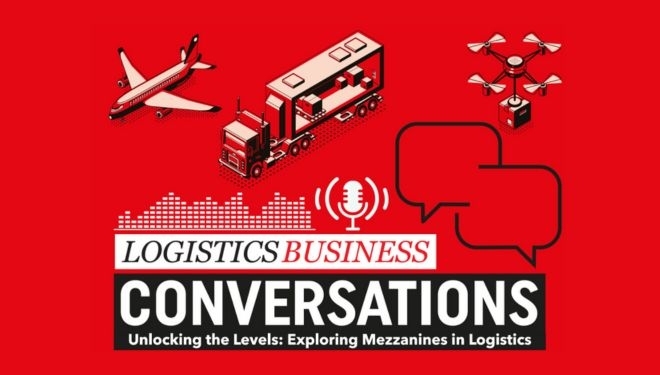When it comes to mezzanines, Geoff Green is someone who really knows his stuff. With 36 years’ experience in the mezzanine industry – working his way up from a fitter to Sales Director – he has a wealth of knowledge and experience.
This was demonstrated recently when Geoff was interviewed by Peter MacLeod, Editor of Logistics Business, for the magazine’s popular podcast series. Anyone considering a project involving a mezzanine floor would be wise to invest 26 minutes of their time to hear Geoff’s insights, available here:
Asked in the podcast about the advantages of a mezzanine, Geoff points to the additional floor space that a mezzanine provides and the benefits this can bring to customers, especially those with sprawling e-commerce and third-party logistics operations. “If you’ve got a building with 9 metres plus eaves height,” he says, “you’re paying to heat and light that space, so why not utilise it?”
Avoiding the pitfalls
One of the key points that Geoff is keen to stress in the interview is the benefit of engaging MiTek early in the life of a mezzanine project. He explains that his team can help customers avoid some of the common pitfalls. For example, clients naturally want to avoid vertical columns and bracing, as they limit access and flexibility in the use of their space. However, customers often overlook the fact that opening up the grid pattern in this way can impact the whole mezzanine design, depending on the condition of the slab (the floor base). “By bringing us in early,” says Geoff, “we can help design the scheme for them and provide the necessary load information so they can build the concrete slab to support the mezzanine.”
Point loading
Geoff is also quizzed about how a mezzanine solution can be designed to ensure flexibility for the future. He explains that the ability of a mezzanine system to meet the evolving needs of a business usually comes down to point load requirements. Given labour scarcity in the logistics sector, increasing numbers of warehouse operators are turning to automation. This means heavy equipment and usually requires a higher point load capacity. Geoff explains that the need for higher point loading can be met by design modifications in the area concerned – such as putting hot-rolled sections underneath the decking, or raising them up so they are level with the decking and the point loads can sit directly on the beams. The disadvantage of this approach is that capacity is increased at that location only, giving little flexibility for the future. The alternative approach is to increase the point loading of the entire system by using MiTek’s Mezzanine7 solution, which offers increased strength everywhere to facilitate future changes in mezzanine use.
Health & safety
On the topic of installation, Geoff stresses MiTek’s commitment to health and safety, which he says forms a major part of proposals to clients. He points out that MiTek has an experienced SHEQ Manager to vet risk assessments and that a MiTek Site Manager is always in place to oversee the work of the installation team and ensure that risk assessments and method statements are adhered to. Geoff remarks that customers need to be prepared for a certain amount of disruption to their operations during installation. Although every site is different and MiTek’s Sales Engineers will make every effort to understand the client’s needs and make mitigations – such as phased construction – he says, “There is always going to be some disruption.”
Sustainability matters
When it comes to sustainability, Geoff explains that MiTek has worked with an independent structural engineering consultancy to develop a mezzanine carbon calculator, which can give clients an understanding of the embedded carbon in their design at quotation stage. He also talks about the increasing demand for green steel from electric arc furnaces, or for recycled steel originating in coal-fired blast furnaces. “What we are finding,” explains Geoff, “is that if we have time and early engagement, we can deliver blast furnace steel from recycled sources that is anything up to 89% recycled.” In addition, MiTek is now offering a more sustainable, cold-formed mezzanine solution as an alternative to its traditional hybrid system (which comprises both hot-rolled and cold-formed steel). This system of using purely cold-formed steel has been more common in Europe but is now gaining a lot of interest in the UK. “We’re finding that our clients are really interested in this innovation,” says Geoff.
What’s the true cost?
Asked what a customer should look for in a mezzanine supplier, Geoff warns against focusing purely on price, quoting the old adage, “Buy cheap, buy twice.” He says that going for the cheapest option is often a mistake. “It may cause more disruption to your business, which will ultimately cost you more money,” he says. Instead, he encourages companies to look for experience and a proven track record. And he emphasizes early engagement again: “Talk to us. Get us involved. Use our expertise – it’s what we’re here for.”
